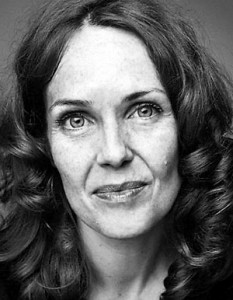Lost in another time, another place, another life
View(s): Cathy Marie Buchanan’s The Painted Girls was inspired by a documentary about the famous sculpture – Degas’s Little Dancer Aged Fourteen.She told a journalist from NPR: “I learned about the seedier side of the Paris Opera, and also about the privation of the young girl, Marie van Goethem, who modelled for the sculpture. It certainly flew in the face of my notions about ballet as a sort of high-minded pursuit, and I became quite fascinated by the idea of telling this young girl’s story.”
Cathy Marie Buchanan’s The Painted Girls was inspired by a documentary about the famous sculpture – Degas’s Little Dancer Aged Fourteen.She told a journalist from NPR: “I learned about the seedier side of the Paris Opera, and also about the privation of the young girl, Marie van Goethem, who modelled for the sculpture. It certainly flew in the face of my notions about ballet as a sort of high-minded pursuit, and I became quite fascinated by the idea of telling this young girl’s story.”When Buchanan first set pen to paper, her intention was to focus solely on Marie, but soon she found Marie’s sister was demanding equal time. “I think now it was inevitable that my story would hold up a magnifying lens to the mysteries of sisterhood— the rivalry, the love,” she said in a Q&A with Book Browse.“With three sisters of my own—each deeply loved by me despite alarming teenage rows—I have often found my mind lingering, wondering, stuck. What is it that provokes rivalry among sisters? And why is it so many of us the world over find solace in the strong arms of the sisters we love, that we so readily open our own? It was quite unintentional—though no accident—that I found myself pondering these questions as I imagined the story of Marie and Antoinette.”
Buchanan herself used to be a dancer, having studied classical ballet quite seriously throughout high school and during the early years of university. She went on to dance with a small regional company for a number of years. She is a Licentiate of the Imperial Society of Teachers of Dance and taught young dancers in order to pay for her own ballet lessons. She said that one of the great pleasures of researching The Painted Girls was attending a class of fourteen-year-old girls at the Paris Opéra Ballet school.
“Through thirty years and a continent away from my own days at the barre, I was struck by how familiar the exercises, the corrections and the music were to me. It made me think Marie’s experience in the classroom and on the stage was a whole lot more similar to my own than one might expect.”

However, going further back she found a lot had changed. The author discovered that back in 1881 the public had linked Little Dancer with a life of vice and young girls for sale, a notion that flew in the face of her modern day notions of the sculpture and ballet. “Today Little Dancer is beloved, an object of pilgrimage for young dancers that world over, and ballet is by and large considered a high-minded pursuit,” she points out.
The belle epoque itself was in fact, not so belle, adds Buchanan, “unless you’re one of the wealthy chosen few. I was recently asked what time period I would like to have lived in, and I have to say as a commoner and a woman, I have to pick now. I don’t think there was any period in history that was as kind as today is to the average person, the average woman in particular.”
As an author of historical fiction, Buchanan thinks her most accomplished work is the result of losing herself in another time and place: “I have had moments when I look up from the computer, dazed. It takes a second to grasp that I am sitting at my desk, a further second to decide: Is it morning or afternoon? Have I had lunch? My head is lost in another time, another place, another life. It’s when the best writing has come.”


